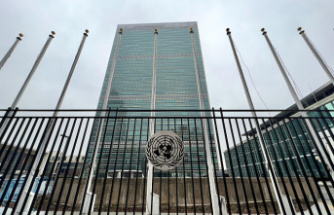An anniversary is coming up for the nuclear waste interim storage facility in Lubmin. A recently confirmed delay in the search for a repository could also have consequences for the site in Western Pomerania.
Lubmin (dpa/mv) - The operator of the interim storage facility for radioactive waste in Lubmin is dealing with a possible extended interim storage. Kurt Radloff, spokesman for the Disposal Works for Nuclear Plants GmbH (EWN), announced that the discussion was open and that they were also involved in the relevant research. "Corresponding research work is already underway, but the results are not yet valid."
On Thursday, the Federal Environment Ministry confirmed that the search for a repository for the highly radioactive German nuclear waste will be delayed beyond the target date of 2031. It was originally supposed to go into operation from 2050. This date is unlikely to be tenable either. Accordingly, a longer use of the interim storage facilities, as in Lubmin, is in the pipeline.
According to Radloff, the first storage permit for a castor in Lubmin ends in 2036. For a longer storage period, new evidence would have to be provided, for example about the behavior of the materials. Research work was carried out on this.
On November 13, 1997 - ie 25 years ago - the district confirmed the completion of the storage building near the former Greifswald nuclear power plant. The storage of the first Castor took place at the end of 1999. According to the Federal Office for the Safety of Nuclear Waste Management (BASE), the permit for the Interim Storage Facility North (ZLN) is valid until 2039. Also because of new safety standards, a new interim storage facility for the 74 Castors of the ZLN should not be built until 2027 at the earliest be operational in the immediate vicinity.
With a view to the expected longer period of interim storage, critics are calling for a so-called hot cell for the new building, in which any defective Castor containers could be opened with appropriate protection.
Radloff explained that such a device is only necessary if the primary cover must be able to be opened. "The underlying set of rules does not provide for this scenario. Building a hot cell today would involve a great many risks, because we will definitely not need the hot cell within the requested storage time." It is questionable whether a hot cell set up today would meet future interim storage requirements.
Nevertheless, the option of retrofitting was considered in the event that the underlying set of rules changes accordingly. Whether a corresponding facility is necessary also depends on the specifications for extended interim storage that are currently being drawn up on behalf of the Federal Ministry for the Environment.












